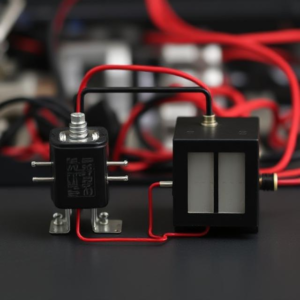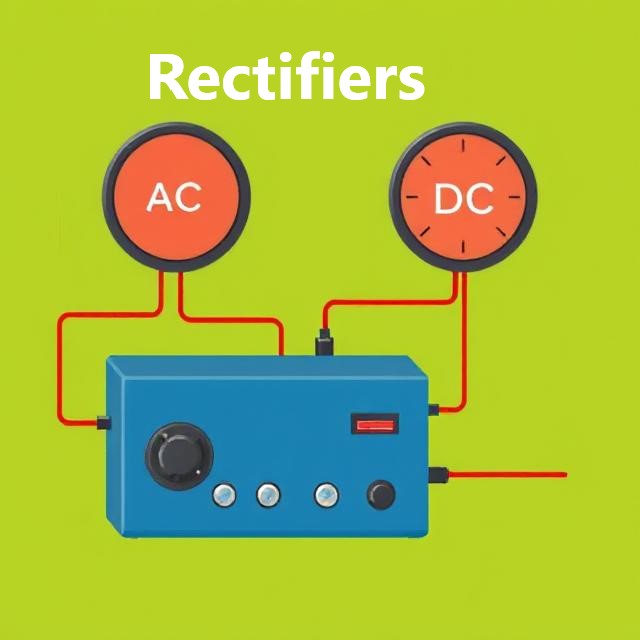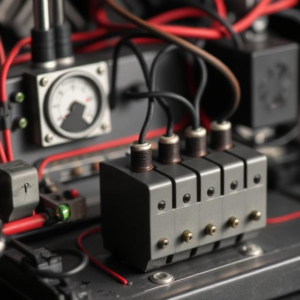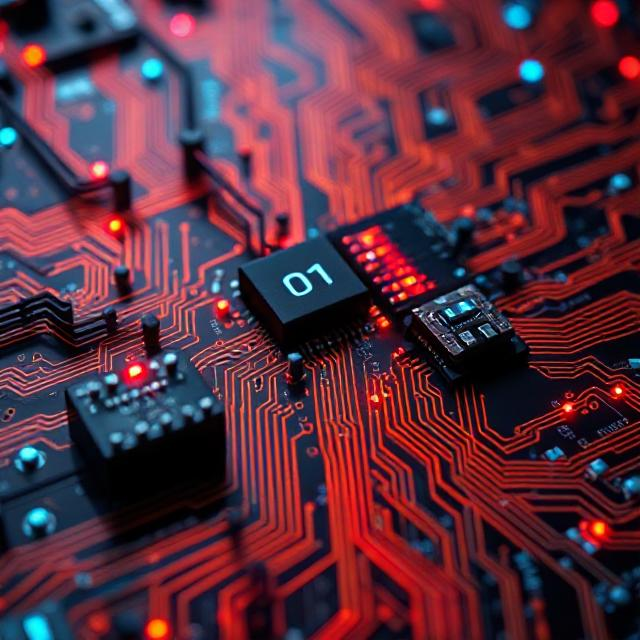Rectifiers are devices used to convert alternating current (AC) to direct current (DC). AC current changes direction constantly, while DC current flows in one direction. Rectifiers are crucial for powering devices that need steady, one-directional current, like your phone, computer, or battery-powered devices.
There are two main types of rectifiers: Half-Wave Rectifiers and Full-Wave Rectifiers. Let’s break down both in an easy way.

1. Half-Wave Rectifier:
A half-wave rectifier only uses one half of the AC wave. It “cuts off” one part of the wave, so only the positive (or negative) portion of the AC waveform passes through. Here’s how it works:
How It Works:
- AC current alternates between positive and negative voltages (it’s like a wave).
- In a half-wave rectifier, only one half of the AC cycle (either the positive or the negative part) is allowed to pass through.
- The other half of the wave is blocked. This results in a pulsating DC output, meaning the current flows in only one direction but still has gaps (pulses) during the time when the AC is blocked.
Example:
Let’s say the AC input looks like this:
- Positive cycle: The current flows through and is allowed to pass.
- Negative cycle: The current is blocked and doesn’t flow through.
So, you only get a half of the wave that looks like a series of pulses.
Pros:
- Simple and cheap to build.
- Easy to understand.
Cons:
- Only half of the input wave is used.
- The output is not smooth—it has gaps, so it’s not a pure DC signal.
- It’s inefficient because it wastes half of the wave.
Circuit Diagram:
AC Input
~~~~ ~~~~ ~~~~
| | | | | |
| | | | | |
| | | | | |
~~~~~~ ~~~~~~ ~~~~~~
2. Full-Wave Rectifier:
A full-wave rectifier uses both halves of the AC waveform, meaning it allows current to flow during both the positive and negative cycles. It’s more efficient than a half-wave rectifier because it uses the entire AC wave.
There are two ways to make a full-wave rectifier:
- Center-Tapped Transformer Full-Wave Rectifier
- Bridge Rectifier
Let’s explain both.
Center-Tapped Transformer Full-Wave Rectifier:
- In this setup, the transformer has a center tap, which means it splits the AC voltage into two parts.
- The AC input is connected to the transformer, and two diodes are used. One diode allows the current to flow during the positive cycle, and the other diode allows the current to flow during the negative cycle.
- The output current is smoother and has less ripple compared to a half-wave rectifier.
Bridge Rectifier:
- This is a more common way to build a full-wave rectifier. It uses four diodes arranged in a bridge.
- During both the positive and negative AC cycles, the diodes work together to always allow current to flow in one direction.
- This results in a smooth DC output with no gaps.
How It Works:
- During the positive half of the AC cycle, current flows through one pair of diodes.
- During the negative half, current flows through the other pair of diodes.
- The result is a continuous flow of current in one direction, creating a smoother, more constant DC output.
Example:
Let’s say the AC input looks like this:
- Positive cycle: Current flows through one pair of diodes.
- Negative cycle: Current flows through the other pair of diodes.
This way, current flows in the same direction during both halves of the AC wave.
Pros:
- More efficient than a half-wave rectifier because it uses both halves of the AC cycle.
- Smoother output (less ripple).
- Provides a more consistent DC current.
Cons:
- Requires more components (diodes, transformer).
- Slightly more complex than a half-wave rectifier.
Circuit Diagram (Bridge Rectifier):
AC Input D1
~~~~ ~~~~ ---->|----
| | | | |
| | | | |
~~~~~~ ~~~~~~~|~~~ |
| |
D2 D3
<|----- |
|
DC Output
3. Comparison:
| Feature | Half-Wave Rectifier | Full-Wave Rectifier |
|---|---|---|
| AC Cycle Used | Only one half (positive or negative) | Both halves (positive and negative) |
| Output | Pulsating DC with gaps (inefficient) | Smoother DC with fewer gaps (more efficient) |
| Components | 1 diode | 2 diodes (center-tapped) or 4 diodes (bridge) |
| Efficiency | Low (uses only half of the AC) | High (uses the entire AC cycle) |
| Output Smoothness | Rough, with a lot of ripples | Smoother, less ripple |
| Complexity | Simple and easy | More complex but more efficient |
4. In Summary:
- Half-Wave Rectifier: It only allows current during one half of the AC cycle, resulting in a pulsing DC output. It’s simple and cheap but inefficient.
- Full-Wave Rectifier: It uses both halves of the AC cycle, making it more efficient and providing a smoother DC output. It’s more complex and requires more components but is the better choice for most applications.
Rectifiers are widely used in power supplies for electronic devices. The choice between a half-wave or full-wave rectifier depends on the application’s need for efficiency and smoothness in the DC output.











